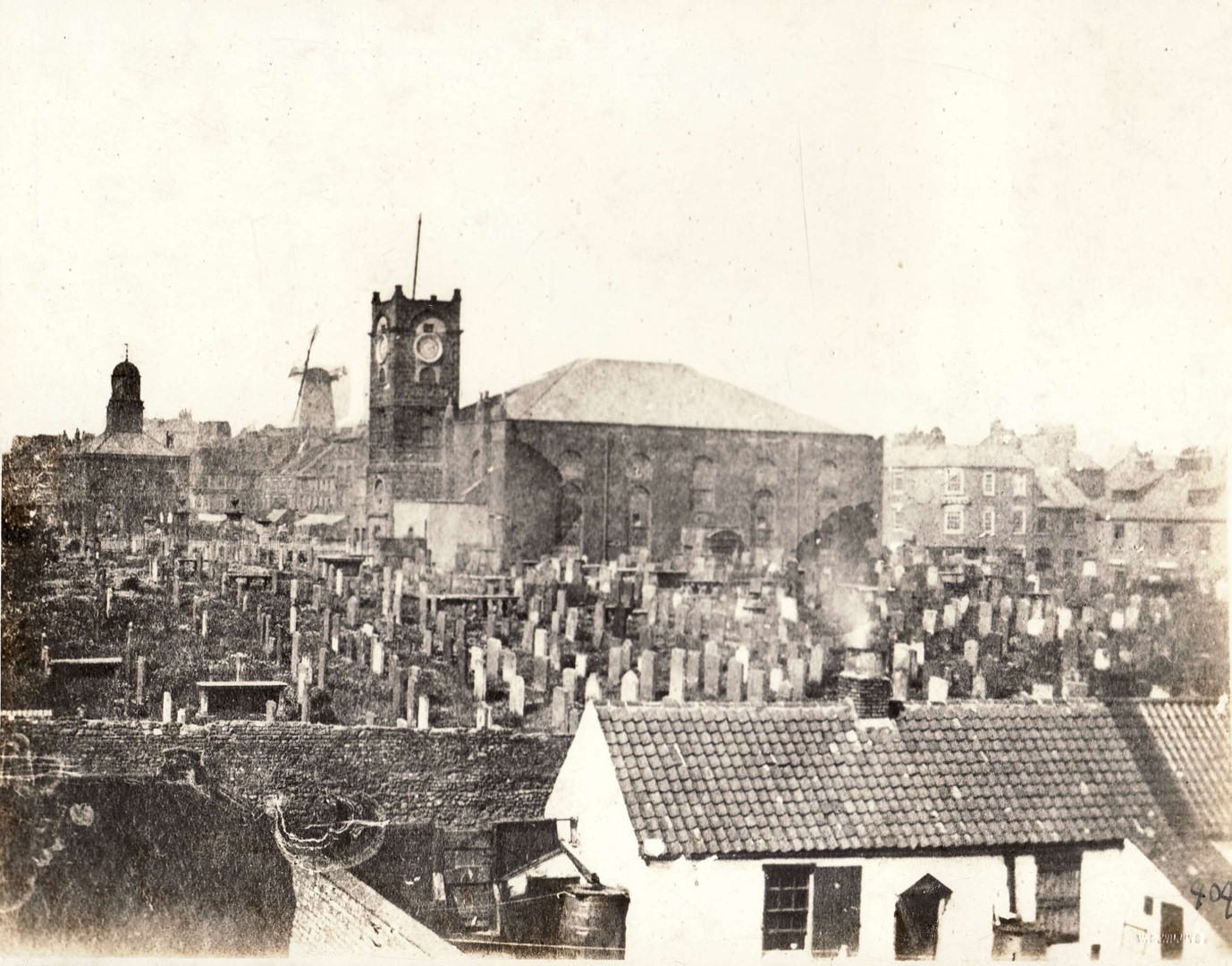
POSTS can now be found under PROJECTS.
| PART 2 > |
ST HILDA'S CHURCHYARD
PART 1: The Death of St Hilda's Churchyard, South Shields

INTRODUCTION
It was following the Second World War that this burial site of over a thousand years in the heart of the town, the final resting place for an estimate of between 40 and 50,000 people in effect disappeared. Radical changes were made to the churchyard by the civic office at that time and although researching for initially four years (2009-2013) then intermittently and in more recent times, I have been unable to find any hard evidence of those responsible for the desecration of this consecrated ground; the demise of the skeletons and who benefitted from the scrap value of the gravestones, vaults and railings so evident in the photograph.
The foundation of St Hilda's Church, the parish church of South Shields dates back to circa AD 647 with a chapel built on the site founded by St Aidan and given to St Hilda to proselytise Christianity. It would follow those burials could have started at a similar time as the inauguration of the chapel borne out by the fact that although there is no evidence of the abbey in Hartlepool, where Hilda was also appointed by Aidan as the second Abbess in 648AD, remains of a monastic cemetery has been found near the present St. Hilda's Church.
During the 14th century in records of the South Shields church there are references to mortuaries and burials and in 1613 there was mention of the need to extend the churchyard because of the increased population of the town. In 13 mention is made to mortuaries in the church. The earliest burial recorded on a gravestone was in 1671 and the last in 1854, the year the Churchyard was closed for burials. However, burials in family vaults in the churchyard continued until the 1890s. it was in the first half of the nineteenth century that the condition of the churchyard started to deteriorate ostensibly because of the excessive number and often random interment of corpses and the neglect by the civic leaders who, during this period were operating from the Town Hall in the Market Place, a short walk churchyard.
Perhaps it is a feasible assumption that the land surrounding the church was a burial site from the late 7th century to the late nineteenth century and that the documentation of 36,576 burials between 1737 & 1897 (2) is hard evidence, contributing to my estimation of as many as half a million interments.
I have a personal interest in the churchyard as my ancestors maternal and paternal both dates back to at least 1620. Records of numerous of them are listed bearing the e.g. the surnames of Young, Dixon, Evans, Dixon, Forster, Heron, Pattison, Pollard and Thompson to identify but a few.

This public announcement in the 'Shields Gazette' in 2009 giving notice of the intention to reinter the skeletal remains of former residents of South Shields in Gloucester Cathedral was the starting point for my investigation into what happened to St Hilda's Churchyard? This is the question I posed to myself in 2009 and now, recovering from a bout of Covid-19 infection in late July 2022, I have collated my research (2009-2013) together with documentation from internet research items as well as papers and articles which I have more recently collected.
TO FOLLOW
Interest in the notification, synopsis of my original research, transcribed documents, internet research (British Newspaper Archive etc.), gravestone inscriptions, significant burials and potential for further investigation.REFERENCES
- 1938 photograph by Amy Flagg, courtesy of South Tyneside Libraries
- 2005, Bridget Mather for Lindenbridge Publications and Research Services